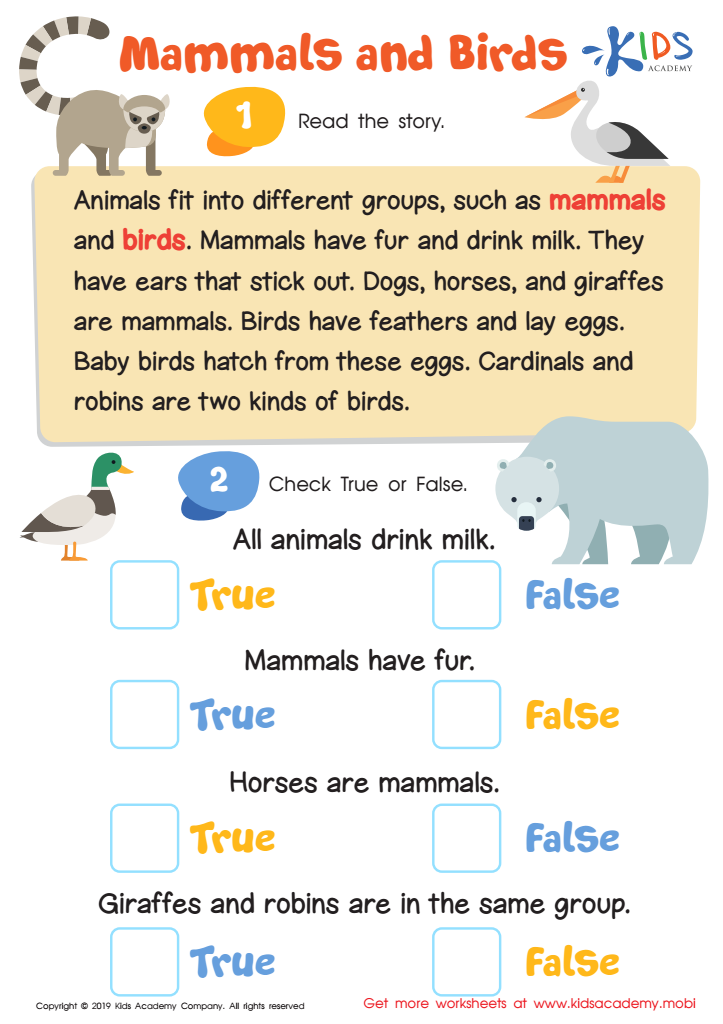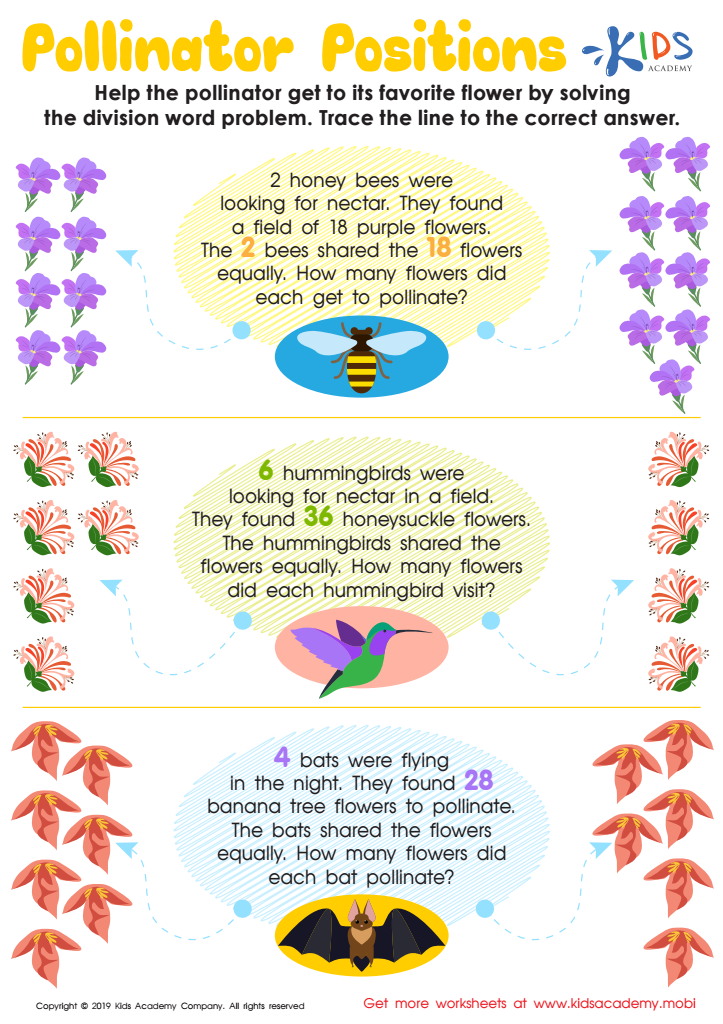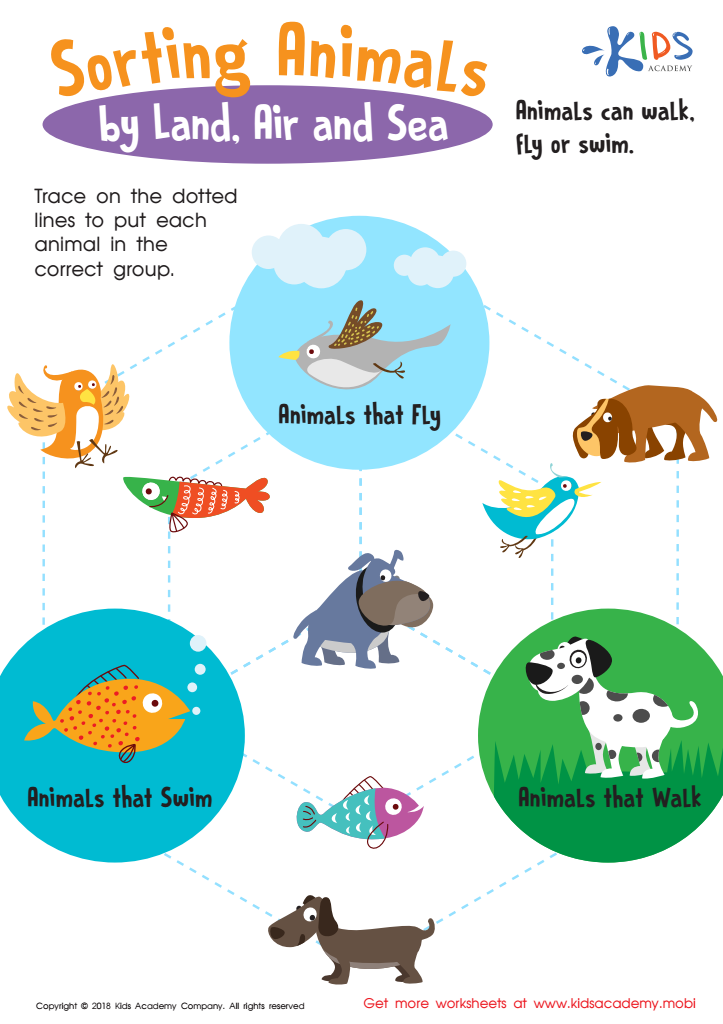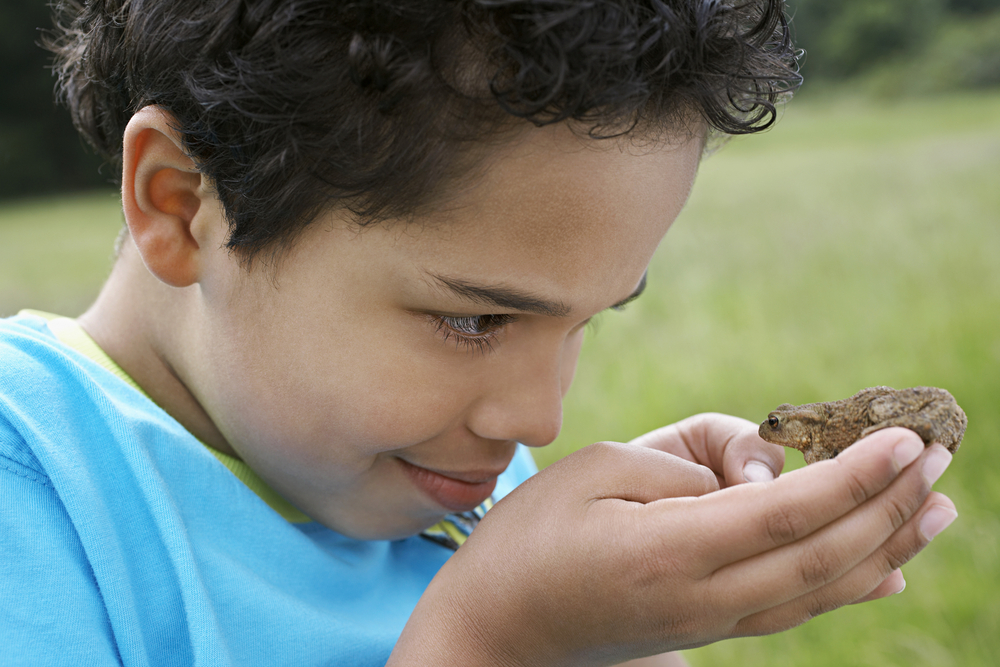Enhancing observation skills Normal Animals Worksheets for Ages 5-8
3 filtered results
-
From - To
Elevate your child's observation skills with our engaging Normal Animals Worksheets, tailored for ages 5-8. These captivating activities help young learners identify and analyze common animals, promoting critical thinking and attention to detail. Each worksheet encourages exploration, allowing kids to discover fascinating animal facts while strengthening their ability to notice subtle differences and patterns in the natural world. Perfect for early science education, our worksheets are designed to make learning fun and interactive. Transform your child's observational prowess and foster a love for nature with these educational resources by Kids Academy.


Mammals and Birds Worksheet


Pollinator Positions Worksheet


Sorting Animals by Land, Air and Sea Worksheet
Enhancing observation skills in young children, specifically ages 5-8, through the study of normal animals is vital for many reasons. Firstly, these formative years are crucial for cognitive development. When children observe animals, they engage all their senses, which helps build their attention to detail and critical thinking skills. For instance, watching the way a cat moves or how birds interact can teach children patterns of behavior, fostering a deeper understanding of their world.
Additionally, learning about animals cultivates empathy and compassion. Recognizing that animals have needs, feelings, and different ways of living encourages children to appreciate diversity and develop caring attitudes. This empathy extends beyond animals to their peers, promoting kindness and cooperation in social settings.
Another significant reason is the foundation it lays for scientific inquiry. Observing and questioning animal behaviors instills a sense of curiosity and exploration. It teaches scientific concepts such as habitats, life cycles, and ecosystems in an accessible and engaging way, laying the groundwork for future learning.
Lastly, these activities sharpen both fine and gross motor skills through drawing, writing, or imitating animal movements. Combining observation with physical activity supports overall brain development and coordination.
In summary, enhancing observation skills through animals enriches cognitive development, empathy, scientific thinking, and motor skills, making it a fundamental aspect of early childhood education.
 Assign to My Students
Assign to My Students
















